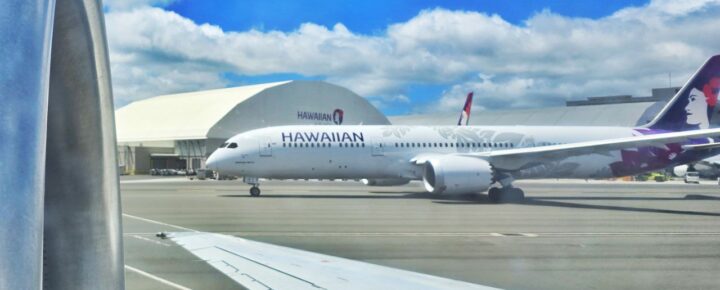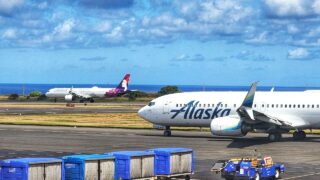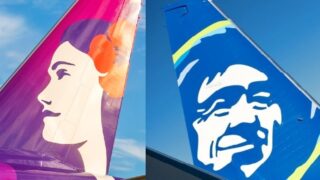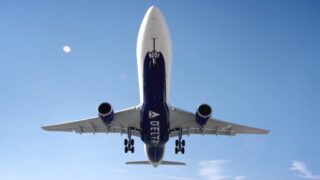The latest U.S. Department of Transportation (USDOT) Air Travel Consumer Report for August 2024 highlights Hawaiian Airlines’ standout performance as a solo operator as it heads toward a major operational shift.
Known for its reliability and top-tier in-the-flesh service on routes to and from the islands, Hawaiian Airlines continues to excel while the airline approaches the transition that will alter the way it operates and reports performance data. By 2025, Hawaiian Airlines will fully integrate with Alaska Airlines under a single operating certificate, marking the finality of its independent operations.
The latest USDOT report showcases Hawaiian Airlines’ industry-leading on-time performance. In August 2024, Hawaiian posted an impressive 86.8% on-time arrival rate, the highest among U.S. carriers.
Alaska Airlines, the new owner of Hawaiian, also performed well while lagging well behind Hawaiian, with an on-time arrival rate of 78.9%. Hawaiian’s low cancellation rate, at 1.5%, is another strong indicator of its reliability, though here Alaska performed even better with a cancellation rate of 0.9%. These metrics demonstrate Hawaiian’s operational strength as it moves toward its integration with Alaska, including combined carrier performance metrics.
Alaska has also indicated expectations for strong financial performance for both its legacy business and in its combined operations with Hawaiian. This strength is speaks to the company’s solid revenue trends, cost management, and strong advanced bookings a key factor influencing the future of Hawaii travel.
Hawaiian Airlines has long struggled with technical and operational shortcomings.
Its Philippine-based call center has been a consistent source of frustration for travelers, with complaints about poor service and language barriers.
The airline’s website and app have also been problematic, with users frequently reporting crashes, slow response times, and overall difficulties on the platforms. These issues have greatly detracted from Hawaiian’s otherwise strong reputation for in-person service and punctuality.
On the other hand, Alaska Airlines is known for its advanced, customer-friendly technology and efficient U.S.-based call center. It is expected to bring Hawaiian much-needed improvements to these areas soon.
Once the integration is complete, if not sooner, Hawaiian passengers can look forward to more responsive customer service and a smoother digital experience. Alaska’s strong track record in these areas should help resolve many of Hawaiian’s existing challenges, making travel more seamless for Hawaii passengers.
Despite operational shortcomings, Hawaiian Airlines remains a top performer.
However, following the integration with Alaska Airlines, Hawaiian’s independent performance reporting will almost certainly end. Travelers will no longer see Hawaiian-specific data, as its metrics will be folded into single operational reporting. While this may make it harder to track the performance of Hawaii-specific routes, the combination of Hawaiian’s strong operations and Alaska’s greater capabilities should enhance overall reliability and efficiency.
Another area where travelers could see changes is in the customer experience. Hawaiian Airlines has cultivated a unique onboard atmosphere deeply rooted in Hawaiian culture, from in-flight entertainment to local menu options.
As the integration progresses, there may be adjustments as the two airlines harmonize their service approaches. Alaska is known for solid customer service, but it remains to be seen how much of Hawaiian’s distinctive character will be retained.
The integration is also expected to streamline flight schedules and optimize overlapping routes, particularly between the West Coast and Hawaii. While some redundant routes may be consolidated, Alaska Airlines’ expanded network could provide more connectivity and flexibility even for Hawaii travelers. This could improve access to Hawaii while reducing operational inefficiencies. There will not be a reduction in overall capacity so long as that is being overseen by the US DOT.
As the airlines combine operations, we know more changes will come to pricing models and loyalty programs. Hawaiian’s frequent flyer program will merge with Alaska’s Mileage Plan, offering different benefits and rewards. While these changes are designed to create a unified system with many benefits, they may take time for travelers to adjust.
In conclusion, as highlighted in the USDOT report, Hawaiian Airlines’ strong performance reflects a solid foundation. Alaska’s expertise in customer service and technology is expected to address many of Hawaiian’s operational weaknesses, hopefully improving the overall travel experience for passengers.
Next year’s full single-carrier integration will mark a significant transformation in Hawaii air travel, ushering in a new era. Are you looking forward to the change?
Get Breaking Hawaii Travel News







If..If…The full integration of the two airlines works as envisioned it will be, in my opinion, the best domestic airline. As someone who makes 2 – 5 roundtrips per year from the west coast to Hawaii, we found that Hawaiian was the best airline and in 2018 it became our standard. While we never flew Alaska primarily due to the fact we almost always fly directly to Kahului, and to fly from the greater Los Angeles area to OGG takes a stop somewhere, before heading west across the Pacific, we know of its strong points.
Looks like your hopes are being realized Jim. Clearly Alaska is maximizing the synergies of these two great carriers.
Your so wrong Hawaiian Air is awful. I fly southwest only.
Hawaiian has unquestionably the very worst Website and App of any US Carrier. Sad.
Personally IMHO this should turn out to be a win-win for both Airlines when everything is finalized next year. Hawaiian Airlines is great with personalized service and wonderful Hawaiian hospitality on board and at the airport, but their app and off shore call center is really awful. AA, DL, SW, UA, and Alaska are far superior in these important areas. Alaska’s strong financial condition and management will bring important infrastructure improvements for Hawaiian Airlines and the traveling public.
Hopefully a year from now we will all be happy with this merger and its benefits for all of us.
Aloha to all.
When AK air acquired Virgin American. They acquired a loan from Boeing. The deal they made with Boeing. Will sell of the V.A. Airbus fleet. And replace them with a all Boeing fleet. Now Boeing has all kinds of issues. And since the doorplug blow out. AK air does not have to so much on the loan.
I have both Alaska and Hawaiian credit cards.
Will miles earned using either card be credited to Alaska miles after the merger is finalized?
Was advised to transfer my wine points to Alaska, so I wouldn’t lose them since no one knew what was going on so that’s what I did. You can use them on both airlines
Only looking forward to the merge as it saves Hawaiian financially. Otherwise hope they retain as much as possible of Hawaiian.